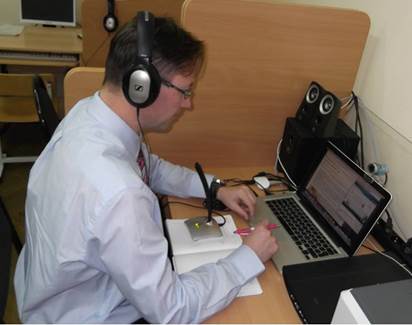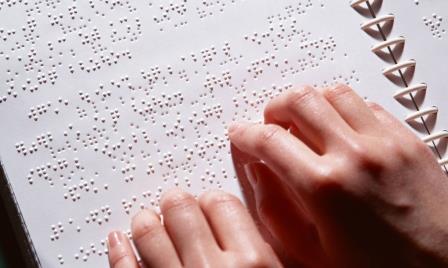Helping professions have been facing many challenges in recent decades. The pressure to increase work performance is more intense than ever, fundamental to the vision of improving the services of helping professions. While growing demands on work performance bring opportunities to develop professionalism, they also impose additional workload. In this context, phenomena that strengthen workers' defenses come to the fore. The construct of hardiness can be considered one of them. It is accepted as one of the concepts of personality resilience.
Hardiness has been at the heart of the research of individual's resilience for over 40 years. It is a three-dimensional construct of the American professor of psychology Suzzane C. Kobasa [35], who described it as a sum of individual's personality traits. Her research has shown that people who carry the properties of hardiness are able to cope with stress much better. Her supervisor Salvator Maddi also worked with Kobasa. During their work together, hardiness was understood rather as a set of attitudes in responding to stress in a specific way. Attitudes in this context support in particular the use of effective coping strategies, behavioral patterns or auxiliary support in the form of social support [36]. Maddi considers the construct of hardiness [10; 28] to be the center of resilience, ie. a key triad of individual's ability to cope with situations that are significantly stressful or unfavorable [22].
Research results suggest that hardiness is closely related to physical [27] and mental health [38; 41]. A negative correlation has been shown in relation to symptoms of depression [39], anxiety [47] or stress disorders [52]. Many experts believe that hardiness positively affects a person's well-being in particular [5; 17; 18], and thus contributes significantly to coping. In addition, in the student environment, the concept of hardiness is associated with motivation or better learning outcomes [28; 40]. In this context, this property of resilience can be understood as essential, as it can contribute both to better academic performance and to the prevention of threats.
1. Hardiness as a Triad of Qualities in the Context of Helping Professions
The construct of hardiness consists of three dimensions – control, commitment and challenge [27]. The control dimension is very closely related to the concept of the locus of control by Julian Rotter (1966). This concept works with a sense of control. Individuals who are convinced that they are the ones who have control over events experience an inner sense of control. However, if one feels that events are influenced by external influences (chance, authorities), we speak of an external locus of control. Kobasa [27] used locus of control mainly because people who feel in control of events are more involved in solving problems and coping with stress. After all, this fact has also been confirmed by other research [1].
Researchers Kardum, Hudek-Knežević & Krapić [6] state that the locus of control is associated with the dimension of commitment which forms the second pillar of hardiness. Unlike the previous dimension, commitment according to Kobas means a tendency to face failures or obstacles from a position of responsibility to oneself or the community. An essential part of this factor is the awareness of meaning and purpose in one's own life.
Commitment is complemented by a third dimension – challenge. Challenge is the belief that the presence of destabilizing elements in an individual's life is a natural state that can be a challenge to empowerment and progress. People with such conviction view stressful situations as opportunities for self-development. In contrast to the locus of control and commitment, it is a relatively independent dimension of hardiness [6].
Hardiness appears in helping professions mainly in the contexts of burnout syndrome, stress responses and mental health. Research activity is most often focused on nurses or employees in the military service. Studies show that nurses with higher levels of hardiness are less likely to experience burnout [30] or emotional exhaustion [42]. Carlotto et al. [2] pointed out that the relationship between the dimensions of hardiness and the manifestations of burnout differs based on socio-cultural aspects. Their study also showed that the construct of hardiness has absolutely no preventive effects regarding burnout. Even longitudinal research has shown that in certain situations, an individual's hardiness may decrease provided that the individual is exposed to long-term stress factors [33]. In particular, it was found that nurses who were subject to more bullying in the workplace during the five-year observation period have shown a reduced level of hardiness. Similar results were obtained by researchers Vogt et al. [54] who have long monitored responses to stress and resilience of recruits in training. Their results suggest that higher levels of stress may be associated with lower rates of resilience. This would mean that mental resilience does not necessarily increase in the presence of stress factors. The potential of this set of properties has been shown elsewhere in this study. In individuals without available social support, it was a higher level of hardiness that was associated with adequate responses to stress.
In the pedagogical professions, it is pointed out that teachers with a higher degree of hardiness also show far greater job satisfaction [4]. The association with job satisfaction is also evidenced by other research [34; 45]. The results of research studies looking at hardiness in educators have revealed that older teachers with many years of experience in the field do better [4; 5; 50]. However, this fact has not been confirmed, e. g. for security personnel where longer experience has been associated with a lower level of resilience [46].
The above leaves unanswered the question whether a categorical variable such as professional orientation can play a significant role in the degree of hardiness. This study focuses on professional orientation – field of study in particular. In addition, it attempts to examine the association between age cohort and hardiness, as age can also be a crucial variable in addition to years of experience.
2. Survey Methodology
The aim of this study was to examine the degree of hardiness and to analyze its differences between students depending on their age and the field of study. According to the research plan, we statistically verified two hypotheses, namely:
H1: The degree of hardiness in students varies depending on their age.
H2: The degree of hardiness varies for students depending on their field of study.
In order to properly verify the hypotheses, we performed data collection using the Personal View Survey – PVS [35]. It is a research tool developed directly to measure the degree of hardiness based on the interaction of an individual with the outside world [11; 35]. The survey measures hardiness using 50 items representing the three dimensions. As described above, the dimensions are control (17 items), commitment (16 items) and challenge (17 items). Respondents evaluated each item as a statement about their own person, on a four-point scale from completely false (0 points) to completely true (3 points). Šolcová (1995) prepared the questionnaire for the Czech PVS environment. According to her manual, the scores which we left in the form of a gross score were added up. The maximum possible total score for the whole questionnaire was 150 points. The maximum score comprised 51 points per dimension in the control and challenge dimensions, and 48 points in the commitment dimension.
To verify the quality of measurement, the reliability of the questionnaire was monitored. One way to verify that the questionnaire is reliable is to determine the internal consistency of the research tool. In order to do that, the Cronbach's alpha coefficient can be calculated. The resulting value should be at least 0.8 [19]. In the research survey by Šolcová and Kebza [24], the resulting coefficient met this standard with a value of α = 0.82. This study has also shown a very satisfactory reliability value of α = 0.85.
The survey was distributed online due to the pandemic. The data obtained from the survey were processed using the SPSS statistics software. We used it mainly for variance analysis and Post-hoc tests.
The research subject group consisted of a total of 260 students in the fields of helping professions in combined forms of study. These were students of psychology, social pedagogy and teaching pedagogy (kindergarten teaching and primary school teaching). The group was obtained by deliberate selection from two faculties of different universities.
Table 1 provides an overview of the distribution of the subject group in terms of socio-demographic data. The questionnaire was completed by 228 women and 32 men aged 21–58 years. The group was divided into three cohorts by age: up to 30 years (21–30 years; N = 89), up to 40 years (31–40 years, N = 98) and over 41 years (41–58 years, N = 78 ). By field of study, 73 students of psychology, 96 students of social pedagogy and 91 students of teaching pedagogy participated in the survey. These were students of the 2nd and 3rd year of bachelor's degree programs.
Table 1
Distribution of the subject group in terms of gender, age and field of study
| Type of sociodemographic data | Cohorts | Number
N
|
| Gender | Male | 32 |
| Female | 228 | |
| Age cohort | up to 30 | 89 |
| up to 40 | 98 | |
| over 40 | 78 | |
| Field of study | Psychology | 73 |
| Non-teaching pedagogy | 96 | |
| Teaching pedagogy | 91 | |
| Total | 260 |
3. Results
The aim of the survey was to find the degree of hardiness in students in the fields of helping professions in terms of age cohort and field of study. First, we analyzed the construct of hardiness depending on the age of the students. Table 2 shows the degree of mental resilience according to individual age cohorts. It follows from the above that the overall average rate of hardiness in the age cohorts varies in the range of 78.81 to 90.1 points. Such values can be considered rather average, given the fact that students were able to obtain 150 points at most.
The highest overall level of resilience can be observed in the commitment dimension, across all age cohorts. Points in this area averaged 28.62 to 32.17. Students over the age of 30 received a slightly higher score (M = 32.17) compared to the average in the commitment dimension of the entire subject group (M = 30.62). The score range in the age cohort over 41 is almost comparable to the overall average. The younger cohort of early adulthood has a slightly lower score range than the overall average among students. As for the control dimension, even here it is older students over 30 who have scored the most points (M = 32.17). They are followed with similar scores by students under 30 (M = 26.31) and over 41 (M = 26.64). The lowest score overall was in the challenge dimension. The middle cohort by age performed best in this area (M = 25.52). Students from the youngest and oldest age cohorts received a similar number of points, 23.99 and 23.22, respectively.
To determine if there is really a difference between the levels of hardiness, we performed a one-factor ANOVA analysis. Due to significant findings, the Tukey-HSD Post-hoc test was used to identify differences between selected cohorts. The results in Table 3 suggest that hardiness is significantly enhanced in students aged 31–40. The rates for younger (p < 0.001) and older students (p < 0.01) differ from this cohort.
Table 2
Degree of hardiness in terms of age cohorts for students of helping professions
| Age | N | Average | SD | Confidence interval | Average of subj. group | ||
| cohort | -95 % | 95 % | |||||
| Up to 30 | Control | 89 | 26.31 | 10.92 | 24.01 | 28.61 | 28.70 |
| Commitment | 28.62 | 8.139 | 26.54 | 26.9 | 30.62 | ||
| Challenge | 23.99 | 7.217 | 22.47 | 25.51 | 24.35 | ||
| Overall hardiness | 78.81 | 17.123 | 75.2 | 82.42 | 83.73 | ||
| Up to 40 | Control | 98 | 32.41 | 7.862 | 30.83 | 33.98 | |
| Commitment | 32.17 | 7.371 | 30.7 | 33.65 | |||
| Challenge | 25.52 | 8.218 | 23.87 | 27.17 | |||
| Overall hardiness | 90.10 | 15.413 | 86.54 | 93.41 | |||
| Over 40 | Control | 73 | 26.64 | 12.269 | 23.78 | 29.51 | |
| Commitment | 30.99 | 8.07 | 29.1 | 32.87 | |||
| Challenge | 23.22 | 8.258 | 21.29 | 25.15 | |||
| Overall hardiness | 81.16 | 17.766 | 77.02 | 85.31 | |||
In accordance with the above, we confirm hypothesis H1, because there are differences in the degree of hardiness among age cohorts of students.
Table 3
Differences in the degree of overall hardiness between age cohorts
| Age cohort | The difference in average | Sig. | Confidence interval | ||
| -95 % | 95 % | ||||
| Under 30 | under 40 | -11.293 | 0.000 | -17.05 | -5.53 |
| Over 41 | -2.355 | 0.645 | -8.57 | 3.86 | |
| Under 40 | under 30 | 11.293 | 0.000 | 5.53 | 17.05 |
| Over 41 | 8.938 | 0.002 | 2.85 | 15.02 | |
| Over 41 | under 30 | 2.355 | 0.645 | -3.86 | 8.57 |
| under 40 | 8.938 | 0.002 | -15.02 | -2.85 | |
Another aim of this study was to examine the degree of hardiness in students depending on their age and their field of study. Table 4 presents the scores achieved in the individual dimensions. Ranked first are psychology students with an average score of 91.23. This is a 7.5 higher average value compared to the total (M = 83.73). Above-average values are present in all dimensions. Students of non-teaching pedagogy ranked second. Their hardiness rate is 83.69. Higher scores are found in the control and commitment dimensions. Based on this it can be concluded that the feeling of internal control and the degree of responsibility are the dominant aspects in these students. Students of teaching pedagogy gained 78.86 points in the overall hardiness rate. In the individual dimensions, it was suggested that the area of control would be very strong, however, this prediction was not confirmed. On the contrary, the value in this factor deviates from the overall average by more than 6 points. The most influential factor appears to be the commitment factor, reflecting the responsibility for one's own actions. The average value in the challenge dimension approaches the value that can be observed in students of psychology.
Table 4
Degree of hardiness in terms of field of study
| Field of study |
Confidence interval | |||||
| N | Average | SD | -95 % | + 95 % | ||
| Psychology | Control | 73 | 30.14 | 11.462 | 27.46 | 32.81 |
| Commitment | 33.55 | 7.444 | 31.81 | 35.28 | ||
| Challenge | 27.42 | 7.039 | 25.78 | 29.07 | ||
| Overall hardiness | 91.23 | 17.120 | 87.24 | 95.23 | ||
| Non-teaching pedagogy | Control | 96 | 30.00 | 11.462 | 28.15 | 31.85 |
| Commitment | 29.59 | 8.693 | 27.83 | 31.36 | ||
| Challenge | 24.08 | 7.729 | 22.52 | 25.65 | ||
| Overall hardiness | 83.69 | 17.025 | 80.24 | 87.14 | ||
| Teaching pedagogy | Control | 91 | 22.16 | 7.039 | 25.78 | 29.07 |
| Commitment | 29.36 | 6.953 | 27.91 | 30.81 | ||
| Challenge | 26.19 | 11.156 | 23.86 | 28.51 | ||
| Overall hardiness | 78.86 | 14.993 | 75.73 | 81.98 | ||
To statistically verify the outlined positions, the one-factor ANOVA method was also used among these cohorts. Because the degree of hardiness differed significantly (p < 0.05), we used the Post-hoc test to identify differences between selected disciplines. Table 5 shows the resulting indicators, which show that psychology students are more resilient than students of social pedagogy (p < 0.01) and teaching pedagogy (p < 0.001). On the other hand, no significant differences were found between students of non-teaching and teaching pedagogy. The results suggest that the level of hardiness among future teachers and pedagogues in non-teaching professions is approximately the same.
Based on the results of statistical testing, we confirm hypothesis H2. The rate of hardiness is significantly higher among psychology students.
Table 5
Differences in the degree of overall hardiness between cohorts by field of study
| Field of study | The difference in average | Sig. | Confidence interval | ||
| -95 % | 95 % | ||||
| Psychology | Non-teaching pedagogy | 7.545 | 0.009 | 1.55 | 13.54 |
| Teaching pedagogy | 12.376 | 0.000 | 6.31 | 18.44 | |
| Non-teaching pedagogy | Psychology | -7.545 | 0.009 | -13.54 | -1.55 |
| Teaching pedagogy | 4.830 | 0.110 | -0.82 | 10.48 | |
| Teaching pedagogy | Psychology | -12.376 | 0.000 | -18.44 | -6.31 |
| Non-teaching pedagogy | -4.830 | 0.110 | -10.48 | 0.82 | |
4. Discussion
The purpose of this study was to find out the degree of hardiness in students in the fields of helping professions and whether they differ depending on cohorts by age and field of study. The results suggest that the degree of hardness in students is rather average. Commitment can be considered the most dominant dimension. It was in this area that students, regardless of age or field, received the highest score. It can be stated that students are dominated by a sense of responsibility which provides drive for commitment and initiative in life.
A significant finding concerns the association of hardiness and age cohorts. Earlier research has yielded conflicting results, some confirming and some denying the assumption that the level of hardiness varies with age. The result of this research leans to the thesis that hardiness may be different in different age cohorts. Specifically, it was confirmed that 31- to 40-year-old students were the most resilient. Their rate was above the overall average. No significant difference was identified between younger and older students, and their scores were below the overall average. This may arise directly from the specifics of the developmental periods of adulthood where significant changes occur. These changes may be related to the acquisition of experience, the acquisition of new roles or the ongoing crises of this age. Younger students are consolidating their own lives in work and personal life. They are just starting to gain experience. On the other hand, older students, over 40 years old, may find themselves in crises associated with middle age, which is likely to weaken their mental resilience. However, this result may also be related to generational differences. Based on generational differentiation of identities, this research mixes post-war, pre-revolutionary and post-revolutionary children, who are usually assigned to generations X, Y and Z [15]. Pre-revolutionary born individuals called Generation Y tend to be associated with better flexibility, as they have undergone many changes in their lives. Not only because they have experienced the change in regime but also because they have adapted very well to life in the digital age [9; 20].
The results further indicated that in addition to age, the field of study is also an important categorical variable. Psychology students had a significantly higher degree of hardiness than students of teaching and non-teaching pedagogical disciplines, among which no difference was found. This fact can be related to both their personality traits and the training offered to students in this field. Individuals interested in the field of psychology may be more oriented towards finding constructive solutions to problematic aspects of life. We can assume that the resilience of these students is also reflected in the psychological training which is related to the process of getting to know themselves and an emphasis on psycho-hygienic habits. Students of pedagogical disciplines which are primarily focused on education and training, have different requirements for academic performance. On the other hand, the topic of mental health can be almost considered a major topic for future graduates of psychology. Maddi et al. [43] pointed out that training or education related to resilience increases its level and interest in this issue. In this context, both personality traits and university education of students can interact and thus contribute to the degree of their resilience.
Regarding the lower resilience in pedagogical students, it is necessary to mention that the pedagogical profession, especially teaching, is one of the stressful ones [8; 13; 14]. According to Spilt et al it’s workload and reduced resilience which cause such a large drop-outs from the teaching profession. Resilience should be precisely that quality of a teacher's personality that should support them in the difficult beginnings of their career [26]. As for non-teaching pedagogy, it can be mentioned that the discussion of experts points out that it is students with a traumatic history who are being admitted to these fields (social pedagogical) [51]. This can affect the development of stress disorders and reduce resilience in these occupations. However, stress can already occur during the studies of students in pedagogical fields and subsequently increases during employment [21; 51].
On a practical level, it can certainly be recommended to include activities for strengthening the personality resilience in the curriculum for all disciplines, for several reasons. Klusman, Richter & Lüdtke [16] see strengthening resilience as an effective way to maintain mental health, as providing help to workers who are already overworked, emotionally exhausted or burnt out is far more challenging. According to Grant & Kinman [31; 32], it is self-knowledge and the development of reflexive abilities that make individuals more resilient. In this context, it is necessary to emphasize the development of soft skills that directly strengthen resilience.
5. Conclusion
This research survey brings several important findings that could significantly affect further research steps and the practice of helping professions. First, the results suggest that the level of hardiness may be strongly related to the age of the individuals, with the strongest in students aged 31–40 in this study. It follows that not only practice in the field but also age must be considered in further research into the concept of hardiness. Second, the degree of hardiness varies depending on the students’ field of study. It is therefore appropriate to examine the degree of hardiness in the context of a specific professional or study direction.
In this context, it is necessary to emphasize the development of soft skills that directly strengthen resilience. This development should not be left for a time when the individual is already entering the profession. On the contrary, they should be guided already during their university studies. In addition, there is a growing need to address the factors that strengthen hardiness and to identify the conditions under which it weakens.
References
- Bartone P. T. Hardiness as a resiliency factor for United States forces in the Gulf War. J. M. Violanti, D. Paton, C. Dunning (eds.). Posttraumatic stress intervention: Challenges, issues, and perspectives. Charles C Thomas Publisher, Springfield, Illinois. 2000. P. 115–133.
- Carlotto M. S. et al. Hardiness and burnout syndrome: A cross-cultural study among portuguese and brazilian nurses. Temas em Psicologia. 2014. Vol. 22 (1). P. 121–132.
- Hricova M., Lovašová S. Stress, secondary trauma and burnout-risk characteristics in helping professions, Journal of interdisciplinary research. 2019. Vol. 8 (2). P. 161–165.
- Jarvis B. A. A study of the relationship between teacher hardiness and job satisfaction at selected elementary schools. Dissertation Abstracts International Section A: Humanities and Social Sciences. 1993. Vol. 54 (6). P. 2049.
- Kamya H. Hardiness and spiritual well-being among social work students: Implications for social work education, Journal of Social Work Education. 2000. Vol. 36 (2). P. 231–241.
- Kardum I., Hudek-Knežević J., Krapić N. The structure of hardiness, its measurement invariance across gender and relationships with personality traits and mental health outcomes. Psihologijske Teme. 2012. Vol. 21 (3). P. 487–507.
- Klusmann U., Richter D., Lüdtke O. Teachers’ emotional exhaustion is negatively related to students’ achievement: Evidence from a large-scale assessment study. Journal of Educational Psychology. 2016. Vol. 108 (8). P. 1193–1203.
- Krninský L. Pracovní zátěž a stres v povolání učitele (přehledová studie). e-Pedagogium. 2012. Vol. 12 (1). P. 82–108.
- Kubiatko M. The comparison of different age groups on the attitudes toward and the use of ICT. Educational Sciences: Theory & Practice. 2013. Vol. 13 (2). P. 1263–1272.
- Maddi S. R. Hardiness: Turning Stressful Circumstances into Resilient Growth. Springer Dordrecht Heidelberg. New York; London, 2013. 88 p.
- Maddi S. R. Personal Views Survey II: A measure of dispositional hardiness. C. P. Zalaquett & R. J. Wood (eds.). Evaluating stress: A book of resources, Scarecrow Press. New Jersey, 1997. P. 293–309.
- Maddi S. R., Khoshaba D. M. Resilience at work: How to succeed no matter what life throws at you. New York, 2005.
- Paulík K. Pracovní zátěž vysokoškolských učitelů. Ostrava, 1995.
- Průcha J. Učitel: současné poznatky o profesi. Praha, 2002.
- Rabušicová M. et al. Mezigenerační učení: teorie, výzkum, praxe. Brno, 2016.
- Smetáčková I. Syndrom vyhoření mezi vyučujícími v mateřských a základních školách. Diagnostika a poradenství v pomáhajících profesích. 2019. Vol. 3. P. 27–40.
- Smith N., Young A., Lee, C. Optimism, Health-related Hardiness and Well-Being among Older Australian Women. Journal of Health Psychology. 2004. Vol. 9 (6). P. 741–752.
- Baranauskiene I., Serdiuk, L., Chykhantsova O. Psychological characteristics of school-leavers’ hardiness at their professional self-determination [Electronic resource]. Social welfare: inter disciplinary approach. 2016. № 6 (2). P. 64–73. Electron. dan. DOI: 10.21277/sw.v2i6.27 (date of access: 27.07.2020).
- Nunnally J. C., Bernstein I. H. Psychometric theory. New York, 1994.
- Spitzer M. Digitální demence: jak připravujeme sami sebe a naše děti o rozum. Host, 2014.
- Stanley N. et al. Down on record. Community Care. 2002. Vol. 17. P. 18–19.
- Šolcová I. Manuál k Personal View Survey. Nepublikovaná verze. Praha, 1995.
- Šolcová I. Vývoj resilience v dětství a dospělosti. Praha. Gradam, 2009.
- Šolcová I., Kebza V. Rozdíly v úrovni a struktuře osobnostní odolnosti («hardiness») u vzorku americké a české populace. Československá psychologie, 1996. № 40 (6). P. 480–487.
- Švamberk Šauerová M. Techniky osobnostního rozvoje a duševní hygieny učitele. Praha. Grada, 2018.
- Tait M. Resilience as a contributor to novice teacher success, commitment, and retention. Teacher Education Quarterly. 2008. Vol. 35 (4). P. 57–75.
- Bartone P. T., Valdes J. J., Sandvik A. Psychological hardiness predicts cardiovascular health [Electronic resource]. Psychology, Health & Medicine. 2016. Vol. 21 (6). P. 743–749. Electron. dan. DOI: 10.1080/13548506.2015.1120323 (date of access: 27.07.2020).
- Cole M. S., Feild H. S. & Harris S. G. Student Learning Motivation and Psychological Hardiness: Interactive Effects on Students' Reactions to a Management Class [Electronic resource]. Academy of Management Learning and Education. 2004. Vol. 3 (1). P. 64–8. Electron. dan. DOI: https://doi.org/10.5465/amle.2004.12436819 (date of access: 27.07.2020).
- Collins S. Statutory social workers: Stress, job satisfaction, coping, social support and individual differences [Electronic resource]. The British Journal of Social Work. Vol. 38 (6). P. 1173–1193. Electron. dan. DOI: https://doi.org/10.1093/bjsw/bcm047 (date of access: 27.07.2020).
- Da Silva et al. Hardy personality and burnout syndrome among nursing students in three Brazilian universities-an analytic study [Electronic resource]. BMC nursing. 2014. Vol. 13 (1). P. 9. Electron. dan. DOI: https://doi.org/10.1186/1472-6955-13-9 (date of access: 27.07.2020).
- Grant L., Kinman G. Emotional resilience in the helping professions and how it can be enhanced [Electronic resource]. Health and Social Care Education. 2014. Vol. 3 (1). P. 3–34. Electron. dan. DOI: 10.11120/hsce.2014.00040 (date of access: 27.07.2020).
- Grant L., Kinman G. Enhancing wellbeing in social work students: Building resilience in the next generation,social work education [Electronic resource]. Social work education. 2012. Vol. 31 (5). P. 605–621. Electron. dan. DOI: 10.1080/02615479.2011.590931 (date of access: 27.07.2020).
- Hamre K. V. et al. Accumulated long-term exposure to workplace bullying impairs psychological hardiness: a five-year longitudinal study among nurses [Electronic resource]. International journal of environmental research and public health. 2020. Vol. 17 (7). Electron. dan. DOI: https://doi.org/10.3390/ijerph17072587 (date of access: 27.07.2020).
- Hystad S. W., Eid J., Brevik J. I. Effects of psychological hardiness, job demands, and job control on sickness absence: A prospective study [Electronic resource]. Journal of Occupational Health Psychology. 2011. Vol. 16 (3). P. 265–278. Electron. dan. DOI: https://doi.org/10.1037/a0022904 (date of access: 27.07.2020).
- Kobasa S. C. Stressful life events, personality, and health: An inquiry into hardiness [Electronic resource]. Journal of Personality and Social Psychology. 1979. Vol. 37 (1). P. 1–11. Electron. dan. DOI: https://doi.org/10.1037/0022-3514.37.1.1. (date of access: 27.07.2020).
- Kobasa S. C., Maddi S. R., Kahn S. Hardiness and health: a prospective study [Electronic resource]. Journal of personality and social psychology. 1982. Vol. 42 (1). P. 168–177. Electron. dan. DOI: https://doi.org/10.1037//0022-3514.42.1.168 (date of access: 27.07.2020).
- Kohoutek R., Řehulka E. Stresory učitelů základních a středních škol v České republice (zejména stresory způsobené učitelům žáky). ŘEHULKA, E., ed. [Electronic resource]. Škola a zdraví pro 21. století. [online]. Brno. Masarykova univerzita, 2011. P. 105–117. Electron. dan. Dostupné z: http://www.ped.muni.cz/z21/knihy/2011/38/texty/cze/kohoutek_rehulka.pdf (date of access: 27.07.2020).
- Kowalski C. M., Schermer J. A. Hardiness, Perseverative Cognition, Anxiety, and Health-Related Outcomes: A Case for and Against Psychological Hardiness [Electronic resource]. Psychological Reports. 2019. Vol. 122 (6). P. 2096–2118. Electron. dan. DOI: https://doi.org/10.1177/0033294118800444 (date of access: 27.07.2020).
- Krauss S. W., Russell D. W., Kazman J. B., Russell C. A., Schuler E. R., Deuster P. A. Longitudinal effects of deployment, recency of return, and hardiness on mental health symptoms in U. S. Army combat medics [Electronic resource]. Traumatology. 2019. Vol. 25 (3). P. 216–224. Electron. dan. DOI: https://doi.org/10.1037/trm0000173 (date of access: 27.07.2020).
- Le D., Nguyen L., Pham H., Co L. Impact of hardiness on learning outcome, quality of life, quality of university life on economic sector students in tra vinh university [Electronic resource]. The Scientific Journal of Tra Vinh University. 2018. Vol. 1 (32). P. 1–11. Electron. dan. DOI: 10.35382/18594816.1.32.2018.53 (date of access: 27.07.2020).
- Leslie C., Hutchinson A. D. Emotional distress when studying sensitive topics in psychology, and its relationship with hardiness and mental health [Electronic resource]. Higher Education Research & Development. 2018. Vol. 37 (3). P. 549–564. Electron. dan. DOI: 10.1080/07294360.2018.1436525 (date of access: 27.07.2020).
- Lo Bue S. et al. Hardiness promotes work engagement, prevents burnout, and moderates their relationship [Electronic resource]. Military Psychology. 2013. Vol. 25 (2). P. 105–115. Electron. dan. DOI: https://doi.org/10.1037/h0094952 (date of access: 27.07.2020).
- Maddi S. R. et al. Hardiness training facilitates performance in college [Electronic resource]. The Journal of Positive Psychology. 2009. Vol. 4 (6). P. 566–577. Electron. dan. DOI: https://doi.org/10.1080/17439760903157133 (date of access: 27.07.2020).
- Mazzetti G. et al. The Hardier You Are, the Healthier You Become. May Hardiness and Engagement Explain the Relationship Between Leadership and Employees’ Health? [Electronic resource]. Front. Psychol. 2019. Vol. 9. P. 2784. Electron. dan. DOI: https://doi.org/10.3389/fpsyg.2018.02784 (date of access: 27.07.2020).
- McCalister K. T. et al. Hardiness and support at work as predictors of work stress and job satisfaction [Electronic resource]. American journal of health promotion. 2006. Vol. 20 (3). P. 183–191. Electron. dan. DOI: https://doi.org/10.4278/0890-1171-20.3.183 (date of access: 27.07.2020).
- Prati G., Pietrantoni L. Optimism, social support, and coping strategies as factors contributing to posttraumatic growth: A Meta-Analysis [Electronic resource]. Journal of Loss and Trauma, 2009. Vol. 14 (5). P. 364–388. Electron. dan. DOI: 10.1080/15325020902724271 (date of access: 27.07.2020).
- Reknes I., A Harris A., Einarsen S. The role of hardiness in the bullying-mental health relationship [Electronic resource]. Occupational Medicine. 2018. Vol. 68 (1). P. 64–66. Electron. dan. DOI: https://doi.org/10.1093 (date of access: 27.07.2020).
- Rotter J. B. Generalized expectancies for internal versus external control of reinforcement [Electronic resource]. Psychological Monographs: General and Applied. 1966. Vol. 80 (1). P. 1–28. Electron. dan. DOI: https://doi.org/10.1037/h0092976 (date of access: 27.07.2020).
- Sheard M. Hardiness commitment, gender, and age differentiate university academic performance [Electronic resource]. British Journal of Educational Psychology. 2009. Vol. 79 (1). P. 189–204. Electron. dan. DOI: 10.1348/000709908X304406 (date of access: 27.07.2020).
- Soderstrom M. et al. The relationship of hardiness, coping strategies and perceived stress to symptoms of illness [Electronic resource]. Journal of behavioural medicine. 2000. Vol. 23 (3), P. 311–28. Electron. dan. DOI: 10.1023/A:1005514310142 (date of access: 27.07.2020).
- Thomas J., Beecher B. What doesn’t kill you: correlates of resilience among master of social work students [Electronic resource]. Advances in Social Work. 2019. Vol. 18 (4). P. 1113–1134. Electron. dan. DOI: https://doi.org/10.18060/21589 (date of access: 27.07.2020).
- Thomassen Å. G., Hystad S. W., Johnsen B. H., Johnsen G. E., Bartone P. T. The effect of hardiness on PTSD symptoms: A prospective mediational approach [Electronic resource]. Military Psychology. 2018. Vol. 30 (2). P. 142–151. Electron. dan. DOI: 10.1080/08995605.2018.1425065 (date of access: 27.07.2020).
- Vance D. E., Struzick T. C., Masten J. Hardiness, Successful Aging, and HIV: Implications for Social Work [Electronic resource]. Journal of gerontological social work. 2008. Vol. 51 (3/4). P. 260–283. Electron. dan. DOI: https://doi.org/10.1080/01634370802039544 (date of access: 27.07.2020).
- Vogt D. S. et al. Longitudinal investigation of reciprocal relationship between stress reactions and hardiness [Electronic resource]. Personality & social psychology bulletin. 2008. Vol. 34 (1). P. 61–73. Electron. dan. DOI: https://doi.org/10.1177/0146167207309197 (date of access: 27.07.2020).












